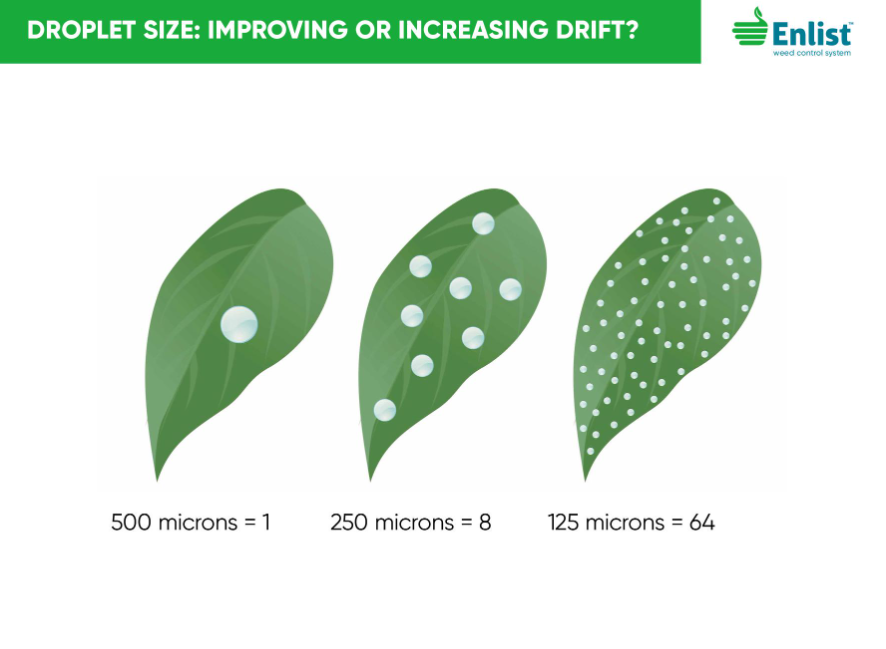Make your herbicide applications more successful by following the product label and using qualified nozzles at the optimal settings. Whether this is your first year using Enlist™ herbicides or you’ve applied it before, Andy Carriger, Enlist field specialist for Corteva Agriscience, shares expert advice on choosing nozzles to achieve more-effective applications.
“If you’re used to other technologies, like LibertyLink or dicamba systems, the nozzles are quite different than what we recommend with the Enlist system,” Carriger says. “We recommend a low-end of a coarse droplet range, somewhere in the 200- to 250-micron droplet size instead of a very large 500 micron or fine 100- to 125-micron size.”
He emphasizes the importance of hitting the droplet range, not only for a consistent droplet size, but also to achieve good coverage. In the midwest and plains geography, Carriger recommends using an AIXR nozzle when applying Enlist herbicides. It’s an air-inducted, extended-range nozzle that provides a consistent spray pattern with a 200-micron droplet size. The graphic below shows the differences in droplet size.
“If you've been using the dicamba system and you're used to ultra-coarse nozzles such as a TTI, you're going to want to change your nozzle setup when using the Enlist system,” Carriger says. “I use this analogy: It’s like you've been putting bowling ball-size droplets on the plants with your previous nozzle setup. Your coverage is going to be less than ideal for small weeds. You need ping pong-ball size droplets.”
The TTI nozzle is often used with the dicamba-tolerant weed control system and, although the TTI is qualified for use with Enlist herbicides, is not an ideal nozzle for coverage because of the very large droplet size. Carriger shows the difference in droplet size between the TTI and AIXR nozzle at 50 PSI in this video segment.
The AIXR nozzle reduces 50% of the fines with more consistent droplet size for better weed control. Both Enlist herbicides – Enlist One® and Enlist Duo® – feature 2,4-D choline with Colex-D® technology. Both herbicides offer the inherent near-zero volatility of 2,4-D choline and reduced physical drift potential due to the combination of Colex-D technology and qualified nozzles.
In this video segment, Carriger shows the difference in spray patterns when 2,4-D choline with Colex-D technology is applied through the AIXR nozzle.
When combined with qualified nozzles, 2,4-D choline with Colex-D technology in Enlist herbicides cuts drift by as much as 90% compared with a tank mix of traditional 2,4-D and glyphosate. A broad choice of qualified nozzles are available with Enlist herbicides, from different manufacturers in multiple sizes. Check the list to find the optimum set up for your goals of coverage and drift control.
Following label requirements and choosing an optimal nozzle and pressure combination will help take control of problem weeds. Talk with a local Corteva representative for more information on nozzles, spray pressure and how to make an effective herbicide application. To learn more, watch our YouTube channel or follow us at @EnlistOnline.
Andy Carriger

Andy Carriger is an Enlist™ field specialist who serves as the in-field expert for the Enlist™ weed control system for Missouri and Kansas. Andy has many years of experience in crop protection with Dow AgroSciences and Corteva Agriscience. Carriger and other Enlist field specialists are experts in weed management, application technology and crop research.
